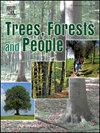Challenges and strategies in meeting urban tree canopy targets: A scenario discovery analysis to guide urban forest planning in new developments
IF 2.7
Q1 FORESTRY
引用次数: 0
Abstract
With increasing urban populations worldwide, new developments face ambitious tree canopy cover targets to mitigate urban heat, reduce stormwater runoff, support biodiversity, and promote health benefits. Achieving substantial tree canopy cover in dense urban areas is challenging due to space constraints and varying species performance. This study explores strategies for achieving a 40 % tree canopy cover target in a new development within the Western Sydney Aerotropolis Precinct, NSW, Australia, using scenario discovery analysis. We identified 54 climate-adapted tree species and analysed 1,372 scenarios considering tree spacing, mortality rates, and open space tree cover requirements. Using i-Tree Eco, we projected annual tree canopy growth over a 50-year period across seven urban typologies. Our results indicate that achieving the 40 % target is feasible only with a diverse mix of Australian native, indigenous, and exotic species and that tree mortality significantly impacts long-term canopy growth. While higher canopy cover in open spaces and effective species selection are crucial, the 40 % target remains difficult to achieve under most scenarios. Strategies to reduce net tree losses, optimise tree spacing, and implement effective landscape design are essential for substantial canopy cover. This research highlights the importance of promoting tree cover growth on private land and provides best practices for urban tree design, establishment, and management, offering insights transferable to other cities globally.
满足城市树冠目标的挑战与策略:指导新发展下城市森林规划的情景发现分析
随着世界范围内城市人口的增加,新的发展面临着雄心勃勃的树冠覆盖目标,以减轻城市热量,减少雨水径流,支持生物多样性,并促进健康效益。由于空间限制和不同物种的表现,在密集的城市地区实现大量的树冠覆盖是具有挑战性的。本研究通过场景发现分析,探讨了在澳大利亚新南威尔士州西悉尼航空大都市区一个新开发项目中实现40%树冠覆盖目标的策略。我们确定了54种气候适应树种,并分析了1372种情景,考虑了树木间距、死亡率和开放空间树木覆盖要求。使用i-Tree Eco,我们预测了50年间七种城市类型的年树冠生长情况。我们的研究结果表明,只有在澳大利亚本土、本土和外来物种的多样化混合下,才能实现40%的目标,而且树木死亡率对冠层的长期生长有显著影响。虽然开放空间的高冠层覆盖度和有效的物种选择至关重要,但在大多数情况下,40%的目标仍然难以实现。减少树木净损失、优化树木间距和实施有效景观设计的策略是实现大量树冠覆盖的必要条件。本研究强调了促进私人土地上树木覆盖增长的重要性,并为城市树木的设计、建设和管理提供了最佳实践,为全球其他城市提供了可转移的见解。
本文章由计算机程序翻译,如有差异,请以英文原文为准。
求助全文
约1分钟内获得全文
求助全文
来源期刊

Trees, Forests and People
Economics, Econometrics and Finance-Economics, Econometrics and Finance (miscellaneous)
CiteScore
4.30
自引率
7.40%
发文量
172
审稿时长
56 days
 求助内容:
求助内容: 应助结果提醒方式:
应助结果提醒方式:


